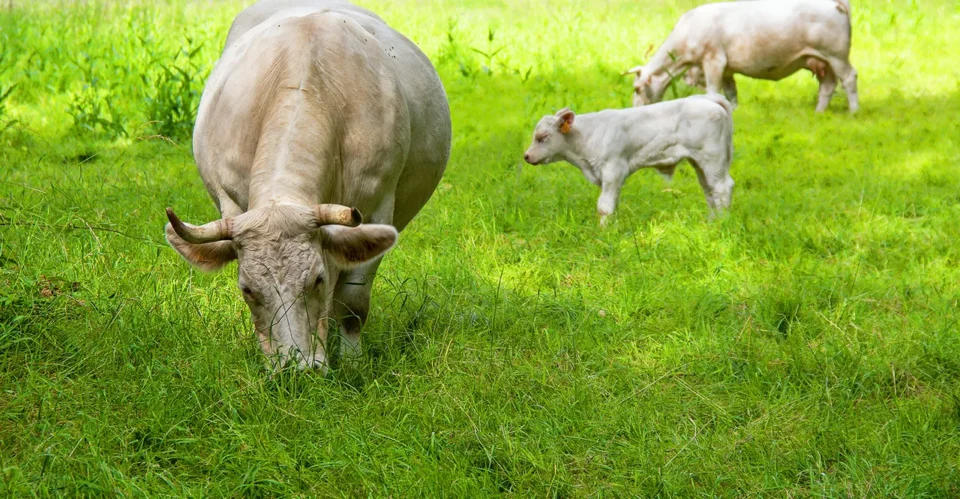Healthy pastures are the foundation of a successful livestock farm. They reduce feed costs, improve animal health, increase reproductive success, and boost overall farm profitability. Well-managed pastures support sustainable grazing, maintain soil health, and enhance livestock performance. For South African livestock farmers, understanding soil, climate, species selection, and pasture management is essential. Agricultural Research Council (ARC) researcher Patrick Rakau shares science-backed advice to help farmers establish productive pastures.
Well-established pastures provide multiple benefits. They reduce the need for herbicides by suppressing weeds naturally, produce high-quality forage for livestock or sale, support higher growth and milk yields, and improve reproductive outcomes such as kidding, lambing, and calving rates. Whether managing a dairy, beef, or mixed livestock farm, establishing pastures with the right approach is crucial for long-term success.
1. Assess environmental conditions. Before planting, it is important to evaluate the environmental conditions of your land, including temperature, rainfall patterns, and soil type, as these factors directly influence which pasture species or cultivars will thrive. Planting the wrong species can lead to poor growth and wasted resources.
2. Comply with legal requirements. Follow South African legislation, including the CARA Act of 1983, which governs the use of virgin soils. Ensure that your site is not a wetland and avoid introducing invasive species. Compliance protects natural resources and your investment.
3. Understand your soil. Healthy soil underpins successful pasture growth, and investing time in soil testing helps identify soil type and fertility. Planting seeds unsuited to the soil can result in poor germination and pasture failure, wasting time and money.
4. Prepare the seedbed. Proper seedbed preparation is vital for germination. Clear weeds and cultivate the soil using a disc plough, reaper, and roller to create a firm, even surface. This allows seeds to germinate and emerge before weeds take hold.
5. Use certified quality seeds. Certified seeds from accredited companies guarantee tested germination rates and consistent growth, reducing the risk of pasture failure.
6. Select species based on livestock needs. Choose pasture species according to your farm’s objectives. Dairy farmers should focus on high-quality, carbohydrate-rich grasses that perform well under irrigation, while beef farmers benefit from natural pastures such as Cenchrus ciliaris, Trichloris crinita, and Smuts finger grass (Digitaria eriantha), which provide high protein content with lower management requirements.
7. Plant at the right time. Timing is crucial for successful germination. Summer rainfall areas are best planted between October and November, while winter rainfall regions like the Western Cape are ideally planted in March. Planting too early or in dry soil can compromise pasture establishment.
8. Protect soil moisture with cover crops. Cover crops conserve moisture, prevent soil degradation, and improve fertility. After harvesting cash crops, avoid leaving soil bare, as uncovered soil loses moisture rapidly.
9. Manage pests, diseases, and weeds naturally. Mixed cropping and cover crops reduce pest and disease cycles without relying heavily on chemicals. Introducing legumes, broadleaf plants, and grasses between crops enhances soil health while allowing farmers to specialize in high-performing species.
10. Know when to graze. Pastures are generally ready for grazing about two months after planting, once roots are fully established. Grazing too early can uproot plants and reduce productivity. Using a 30 cm ruler helps determine optimal grazing height, and observing rest periods between grazing ensures healthy regrowth. Implementing rotational grazing, moving livestock when pasture is grazed down to approximately 10 cm, protects the pasture, prolongs its lifespan, and ensures consistent forage availability.
Farmers should avoid common mistakes such as ignoring soil science, planting crops at the wrong time, and poor grazing management. Sandy soils, for example, hold little water, so species selection should match soil characteristics. Planting summer crops in winter limits growth, and neglecting proper grazing practices can lead to overgrazing and pasture degradation. By carefully following these ten steps, farmers can establish pastures that are productive, sustainable, and profitable, supporting healthier livestock and ensuring long-term farm success.



